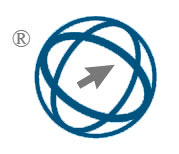Reduced Convolutional Recurrent Neural Network Using MFCC for Music Genre Classification on the GTZAN Dataset
Abstract
Full Text:
PDFReferences
D. Stefani and L. Turchet, “On the Challenges of Embedded Real-time Music Information Retrieval,” in Proceedings of the International Conference on Digital Audio Effects, DAFx, 2022, pp. 177–184.
P. Ghosh, S. Mahapatra, S. Jana, and R. Kr. Jha, “A Study on Music Genre Classification using Machine Learning,” Int. J. Eng. Bus. Soc. Sci., vol. 1, no. 04, pp. 308–320, 2023, doi: 10.58451/ijebss.v1i04.55.
J. Sang, S. Park, and J. Lee, “Convolutional recurrent neural networks for urban sound classification using raw waveforms,” Eur. Signal Process. Conf., vol. 2018-Septe, pp. 2444–2448, 2018, doi: 10.23919/EUSIPCO.2018.8553247.
V. Bella and S. A. Sanjaya, “Refining Baby Cry Classification using Data Augmentation (TimeStretching and Pitch-Shifting), MFCC Feature Extraction, and LSTM Modeling,” in 2023 7th International Conference on New Media Studies (CONMEDIA), IEEE, 2023. doi: https://doi.org/10.1109/CONMEDIA60526.2023. 10428158.
M. Ashraf et al., “A Hybrid CNN and RNN Variant Model for Music Classification,” Appl. Sci., vol. 13, no. 3, 2023, doi: 10.3390/app13031476.
J. Mendes, “Deep Learning Techniques for Music Genre Classification and Building a Music Recommendation System,” National College of Ireland, 2020.
X. Luo, “Automatic Music Genre Classification based on CNN and LSTM,” Highlights Sci. Eng. Technol., vol. 39, pp. 61–66, 2023, doi: 10.54097/hset.v39i.6494.
M. K. Kumar, K. Sujanasri, B. Neha, G. Akshara, P. Chugh, and P. Haindavi, “Automated Music Genre Classification through Deep Learning Techniques,” E3S Web Conf., vol. 430, 2023, doi: 10.1051/e3sconf/202343001033.
G. Tzanetakis and P. Cook, “Musical genre classification of audio signals,” IEEE Trans. Speech Audio Process., vol. 10, no. 5, pp. 293– 302, 2002, doi: 10.1109/TSA.2002.800560.
G. Tzanetakis and P. Cook, “MARSYAS: A framework for audio analysis”.
S. Y. Yehezkiel and Y. Suyanto, “Music Genre Identification Using SVM and MFCC Feature Extraction,” IJEIS (Indonesian J. Electron. Instrum. Syst., vol. 12, no. 2, p. 115, 2022, doi: 10.22146/ijeis.70898.
I. D. G. Y. A. Wibawa and I. D. M. B. A. Darmawan, “Implementation of audio recognition using mel frequency cepstrum coefficient and dynamic time warping in wirama praharsini,” J. Phys. Conf. Ser., vol. 1722, no. 1, 2021, doi: 10.1088/1742-6596/1722/1/012014.
H. Heriyanto, T. Wahyuningrum, and G. F. Fitriana, “Classification of Javanese Script Hanacara Voice Using Mel Frequency Cepstral Coefficient MFCC and Selection of Dominant Weight Features,” J. Infotel, vol. 13, no. 2, pp. 84– 93, 2021, doi: 10.20895/infotel.v13i2.657.
B. McFee et al., “librosa: Audio and Music Signal Analysis in Python,” Proc. 14th Python Sci. Conf., no. August 2020, pp. 18–24, 2015, doi: 10.25080/majora-7b98e3ed-003.
P. A. Aritonang, M. E. Johan, and I. Prasetiawan, “Aspect-Based Sentiment Analysis on Application Review using CNN (Case Study : Peduli Lindungi Application),” Ultim. Infosys J. Ilmu Sist. Inf., vol. 13, no. 1, pp. 54–61, 2022.
R. Yamashita, M. Nishio, R. Kinh, G. Do, and K. Togashi, “Convolutional neural networks : an overview and application in radiology,” pp. 611– 629, 2018.
N. Srivastava, G. Hinton, A. Krizhevsky, I. Sutskever, and R. Salakhutdinov, “Dropout: A simple way to prevent neural networks from overfitting,” J. Mach. Learn. Res., vol. 15, pp. 1929–1958, 2014.
A. Katrompas and V. Metsis, “Enhancing LSTM Models with Self-attention and Stateful Training,” in Lecture Notes in Networks and Systems, 2022, pp. 217–235. doi: 10.1007/978-3-030-82193- 7_14.
DOI: https://doi.org/10.31449/inf.v49i17.6885

This work is licensed under a Creative Commons Attribution 3.0 License.









